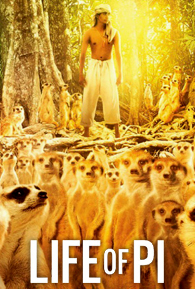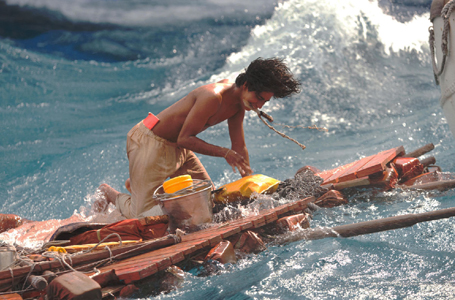
It's sort of like Robinson Crusoe, with an Indian teenager and his not-quite pet tiger marooned in the open seas instead of an Englishman stuck on an uninhabited island with his native sidekick. And with enough beautiful CGI (including the iridescent whales in the trailer to the tiger to the clouds and the sublime painterly sky) to make your jaw drop to the ground, if it hasn't already from the improbable adventures of Pi in the middle Pacific.
Whether or not you are impressed by the hokey storytelling and the easy spirituality it hawks, Life of Pi is a pure visual film whose beautiful images and technical artistry are justification enough for its existence.
That being said, I recognise that Life of Pi is also liable to bring out the "Bah, humbug!" from certain audiences. Yann Martell's blatant Orientalism survives intact in the film, promoting through the lens of contemporary American psyche an easy, self-congratulatory spirituality that springs from confusing cheap sentimentality for the numinous. If you do take an oppositional reading of the film, you might say there's only one way that an improbable yarn could inspire someone to believe in God — it can only happen if that someone believes that the more improbable a story, the more likely it is to inspire belief.
Ang Lee adopts a conservative approach in this adaptation, hewing very faithfully to how the novel tells its story from the very beginning — a long prologue set in Emergency India. Cinematically, this approach is problematic given how the story (or at least the one that matters most) begins in earnest only in the middle of the film, and how this long middle section can get monotonous even with (or precisely because of) all that wondrous CGI (especially in Ang Lee's no-longer Crouching Tiger Richard Parker, almost a star by himself) and improbable, episodic adventures.
As an adaptation, Ang Lee's Life of Pi is a thing of beauty and wonder, no matter the flaws of its source material.

